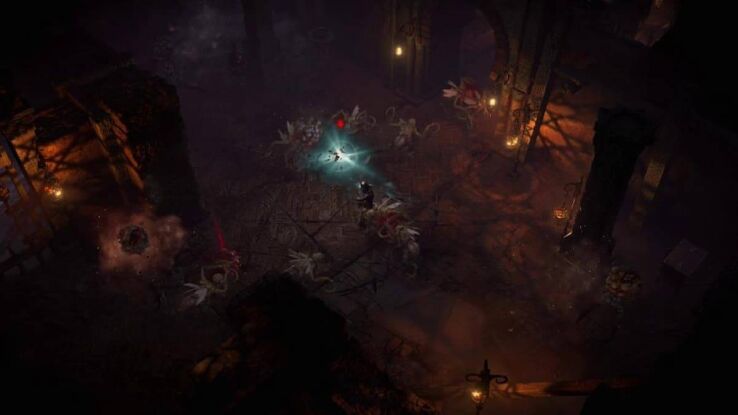SteelSeries Aerox 5 Wireless – Diablo IV Edition
Diablo 4 What is Crowd Control?

WePC is reader-supported. When you buy through links on our site, we may earn an affiliate commission. Prices subject to change. Learn more
If you’re new to the Diablo franchise, or a veteran who hasn’t played in a while, there’s a lot of terminology for fans to get familiar with in Diablo IV. Walkthroughs can help if you’re lost, but sometimes a complete guide is necessary.
If you’ve played RPGs for a while, you’ll be familiar with terms like class, stats, and others, but Diablo has its own as well, like Damage Buckets. It can be a lot to take in if you’re not familiar with the game, especially with a game as large as Diablo.
Crowd control is common in many games, and Diablo IV is no exception. What does crowd control mean in Diablo IV? That’s what we’re here to tell you.
What does crowd control mean in Diablo 4?
Crowd control specifically used in Diablo IV means any attack that hinders enemies’ ability to attack and move. This acts as crowd control because the enemies aren’t able to swarm you as easily and there, is easier to control the flow of the battle.
Here are the different moves that count as crowd control in Diablo IV:
- Stun
- Freeze
- Slow
- Daze
- Immobilize
- Knockback
- Knockdown
- Fear
- Tether
- Chill
- Freeze
These different forms of CC each affect any monster’s ability to move or attack you, for example, slow will slow enemies down, have a knockdown effect to stop enemies, and freeze will, well, freeze enemies so they can’t move or attack you, as they’re frozen. Luckily the names are pretty easy to discern what they do.
These attacks and status effects can also be used on your own player though, as certain foes can use attacks with these effects that can stun you, daze you, and more. You are not immune to the crowd control mechanic. The duration of the crowd control effects is up to the strength of the player or enemy, and their skill attacks.
Diablo 4 – when to use crowd control
Crowd control is great when facing large swarms of enemies, in tandem with Area of Attack (AoE) damage to take the affected enemies out all at once. A crowd-controlled enemy is significantly easier to take on than normal monsters, and many do direct damage as well as just putting an effect on them. They’re great during both quests and the endgame content.
Unfortunately, that means most Elites and bosses, including both story bosses and world bosses, are not going to be affected by these attacks, as they don’t count as crowd control because a crowd is not just one monster.
Crowd control moves can be found in any class, Barbarian, Druid, Rogue, Sorcerer/Sorceress, and Necromancer all have plenty of moves that can use crowd control to their advantage. CC effects can be found under the attack’s description, so you can know what exactly your attack or spell does. On the battlefield, it’s important to know what each attack you use does, and crowd control is especially important.
What is crowd control in Diablo 4?
Crowd control is a term for Diablo players that refers to any move that hinders or stops an enemy’s ability to move or attack.
What types of crowd control are there in Diablo 4?
Diablo IV has 11 different types of crowd control moves; stun, freeze, slow, daze, immobilize, knockback, knockdown, fear, tether, chill, and freeze.
The Art of Diablo
SteelSeries Arctis Nova 7 Wireless Multi-Platform Gaming Headset